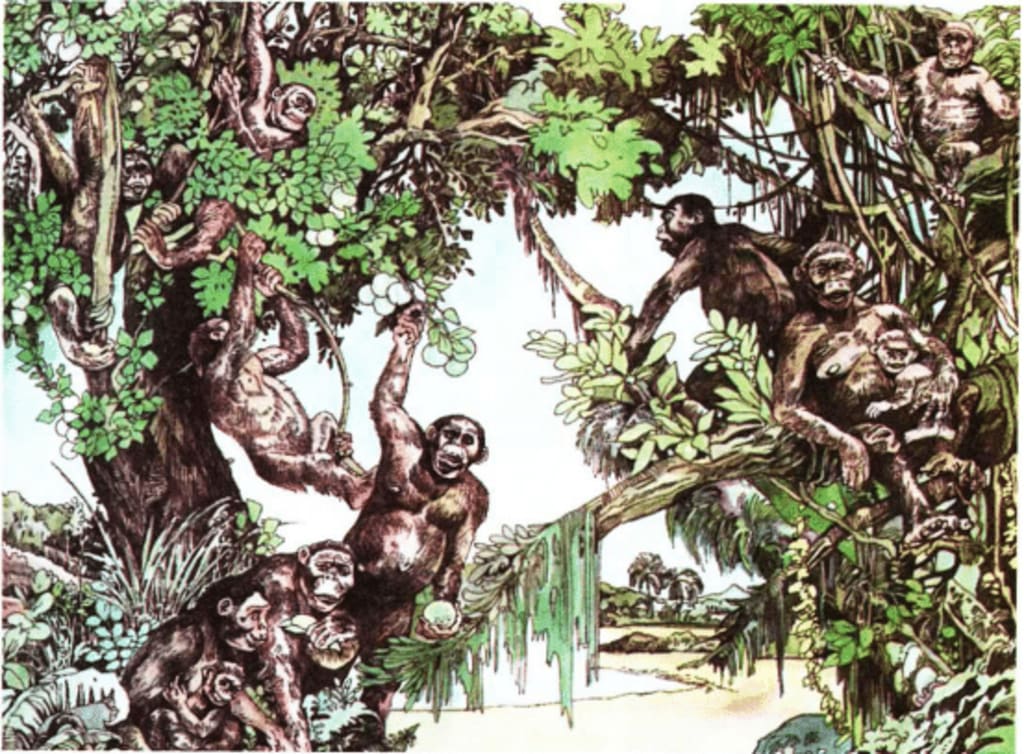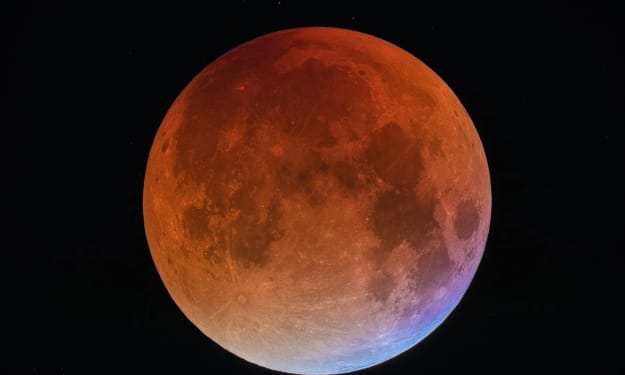Why don't people eat carnivores, but only herbivores?
How did human food habits evolve?

Now that the Chinese have largely solved the problem of food and clothing, people in many regions are no longer just looking for a full stomach in their diets, but for a balanced and healthy diet. This is especially true for people who are dieting and working out, whose recipes are more regular and lighter than the average person's, basically consisting of vegetables, fruits and vegetables and protein-supplemented meat such as chicken. Even for those who don't work out, meat is usually included in their regular recipes, but our meat usually comes from poultry and livestock, which are basically herbivores or omnivores.
Looking back at the history of human development over the last 10,000 years or so, we will find that humans have largely remained largely unchanged in their recipes, which include both plant and animal foods, as a result of our ancestors' evolution over time. However, some studies have found that the earliest humans were not omnivores and did not eat only herbivores when it came to meat, so the question arises as to why human food habits became less carnivorous. What is the reason behind this pattern in the natural world of carnivores as well?
How did human food habits evolve?
To find out the answers to these questions, we must first find out how human predation has changed. According to the theory of evolution, modern Homo sapiens evolved from the African archaeopteryx, which originally lived in the forests of eastern Africa, but then the geological activity there caused the forest floor to evolve into a grassland landscape and some of the archaeopteryx had to come to the surface. They were omnivorous by this time, eating plants as well as small insects to feed themselves.
When the archaeopteryx came down to earth they found that there were many threats to life on the ground and that food resources were reduced, but in order to survive they had to compete with predators, but due to a lack of aggression the archaeopteryx had to avoid the predators and wait for them to finish and then pick up the rest of the food to eat, so the archaeopteryx of this period added a diet - scavenging. Over time, some of the archaeopteryx moved out of Africa to Europe and Asia in search of survival opportunities.
However, Europe and Asia also had their own carnivorous populations and in order to survive the apes began to evolve, firstly by increasing their brain size and then by learning to use tools. As a result of this increase in brain capacity, the apes were no longer able to rely solely on fruit picking and carrion to provide energy, so they began to use the power of the group to hunt and capture small animals for food, and by this time they were already eating herbivores.
Later on, when humans formed settlements, they also began to domesticate wild animals, which to a certain extent ensured a source of food, so the human diet was basically fixed, i.e. eating vegetables and fruits as well as meat, which generally came from herbivores. Compared to herbivores, carnivores tend to be larger and provide more meat, so why do humans mainly hunt carnivores, but herbivores?
Reason 1: The cost of eating carnivores is too high
First of all hunting is dangerous, especially the killing of carnivores. The ancient apes have been threatened by predators since they first descended from the trees to live on the ground. Archaeological research has revealed that a predator called the dingo appeared in Africa at that time, feeding exclusively on archaeopteryx. It can therefore be assumed that creatures like the dinosaur left an early impression of fear on the ancient apes, and this knowledge was gradually engraved in their genes and passed on to the next generation.
Once archaic apes began hunting, they became competitive with predators, needing to focus on how to kill herbivores on the one hand, and to guard against predators attacking themselves on the other. Even though humans have since learned to use fire and tools, they have rarely actively hunted carnivores, and even when they have actively rounded up carnivores, it was not for their meat, as they were difficult to deal with and could have posed a threat to their own lives.
Secondly, it is far more difficult to domesticate a carnivore than a herbivore. Archaeological research has found that the food habits of Homo sapiens were basically set in stone during the Neolithic period, when humans were able to eat both plant and animal foods, mainly because they had learned to farm animals and grow plants. The animals we eat today were basically domesticated around that time, for example sheep were domesticated around 9000-11000 BC, pigs were domesticated around 9000 BC and cattle were domesticated around 8000 BC.
To summarise the characteristics of these animals that have been domesticated by humans, they all have a few things in common. Firstly, they are omnivorous, which means that it is not expensive for humans to keep them. Secondly, they are relatively gentle, and several animals such as pigs, cows and sheep fit this profile. Even the dog, which has been domesticated by humans, has become very obedient. Thirdly, they prefer to live in packs, which provides a great degree of convenience for human management and capture.
Reason 2: The higher up the food chain, the less energy flow
The second reason, that humans can get essentially very little energy from predators, depends on the energy transfer in the food chain. In every ecosystem there is a hidden chain of relationships that reflects the predatory relationship between animals, hence the term 'food chain'. Food chains reflect not only predation, but also the flow of energy and nutrients. At the lowest end of the food chain are usually plants, which play the role of 'producers', followed by herbivores and carnivores.
It has been found that the lower down the food chain, the more energy and nutrients an organism gets from lower levels of food, as energy and nutrients decrease with each level of the food chain. In a simple food chain of grass - rabbit - fox, for example, 75%-95% of the energy a rabbit gets from grass is used for its own consumption, so a fox will typically capture a rabbit and get no more than 30% of its energy from it.
In nature, there are higher levels above the fox, so higher-level carnivores get very little energy from a single carnivore, so instead of catching the next level of carnivore, some carnivores simply cross over to catch the lower level of herbivore, just to get more energy and nutrients. This is something that most carnivores have learnt in the course of their existence, and there is no reason why humans, as intelligent beings of a higher order, should not have learnt it, is there?
There is also a more subjective reason that limits the capture of carnivores by humans, namely that the meat of carnivores is generally inferior in quality to that of herbivores. On a deeper level, this is determined by their genes; carnivores and herbivores have different genes responsible for the production of muscle protein and therefore end up with different muscle protein. On a superficial level, carnivores have to run around for food every day, so their muscles are more developed than those of herbivores, but they are more woody to eat.
Reason 3: Herbivores are generally more numerous than carnivores
If you have analysed the numbers of the various layers of the food chain, you will find that all the layers stack up in order like a pyramid, with those at the bottom being the producers, who are the most numerous. The penultimate level is the phytophagous animals, which are second in number to the producers, and then the carnivores, with each level decreasing in number as the survival of the animals at the higher levels is influenced by the animals at the lower levels, in short, food relations limit the population development of the animals at the higher levels.
Perhaps our ancestors discovered this pattern during the Neolithic period and chose to domesticate the more easily controlled herbivores. There is also the more intuitive reason that herbivores tend to outnumber carnivores in the same area, so humans tended to domesticate the more numerous species so that there would be a more stable food supply after domestication. Also, as analysed above, these herbivores have a common characteristic, they like to live in groups.
In the early stages of domestication, herding made it easier for herbivores to group together, thus making it easier for humans to domesticate them. In the later stages of captivity, herding facilitated the management of livestock and, most importantly, the availability of more food.
Why is predation between carnivores relatively rare in nature?
In summary, humans rarely eat carnivores in their lives, a habit that has been around since our ancestors. An in-depth analysis of this habit reveals many hidden natural laws and truths that can be used to explain not only human phenomena, but also those of other carnivores, because predatory relationships rarely exist between carnivores in nature, and are more often competitive.
With the exception of individual species of carnivore, which are not fussy about their food and will eat any kind of animal, other carnivores basically weigh the pros and cons of this. The strength and speed of carnivores are often in competition with each other, and if they were to go head-to-head, they could end up in an awkward situation where no one would be able to eat anyone. What's more, carnivores get less energy and nutrients from predators, and it takes a lot of effort and risking their lives to get a little energy, something that normal animals cannot do.
At the same time we must not overlook the cumulative effect of substances in the food chain. When animals at the lower levels ingest harmful chemicals from the environment, these chemicals cannot be digested and either pose a threat to the lives of animals at the lower levels or are passed through the food chain to animals at the higher levels.
About the Creator
Vicky
The world is so wonderful, let's get to know the world together!
Enjoyed the story? Support the Creator.
Subscribe for free to receive all their stories in your feed. You could also pledge your support or give them a one-off tip, letting them know you appreciate their work.






Comments
There are no comments for this story
Be the first to respond and start the conversation.